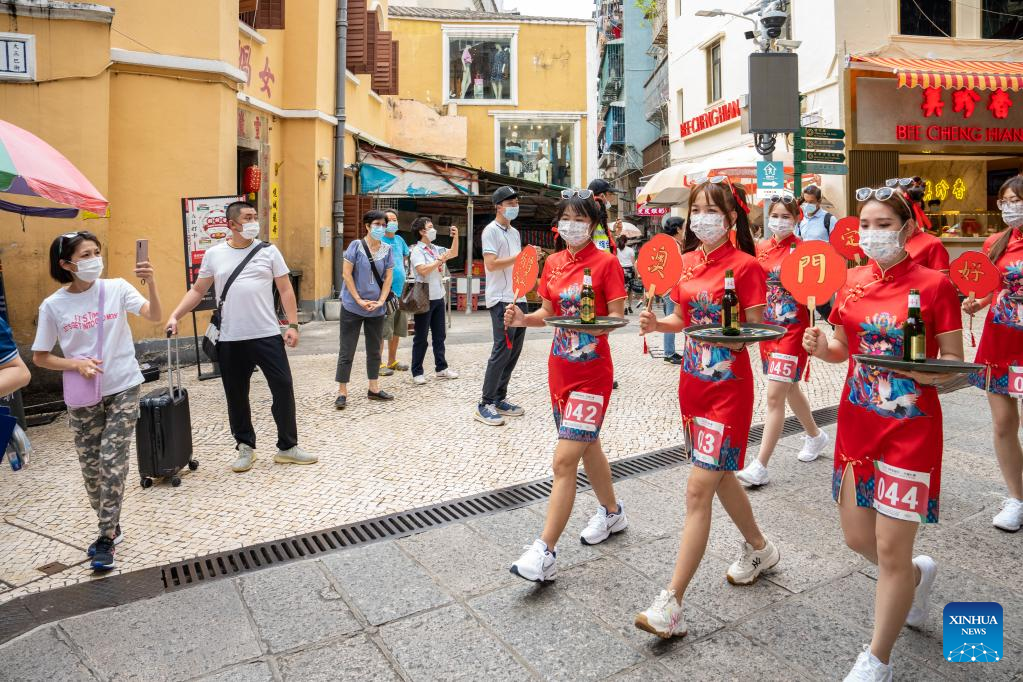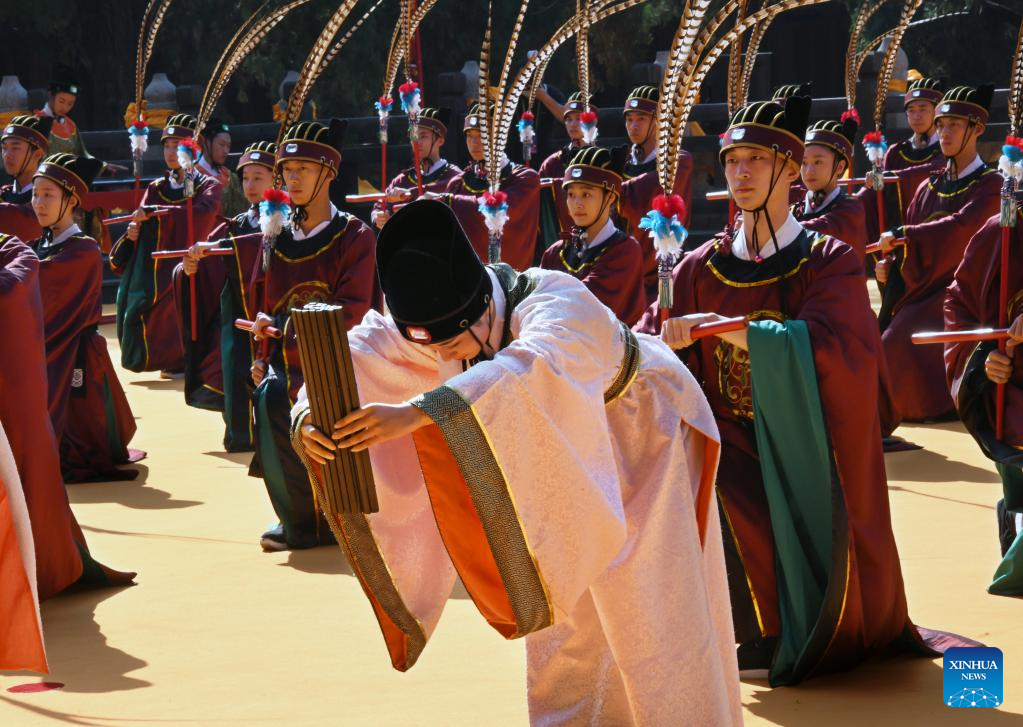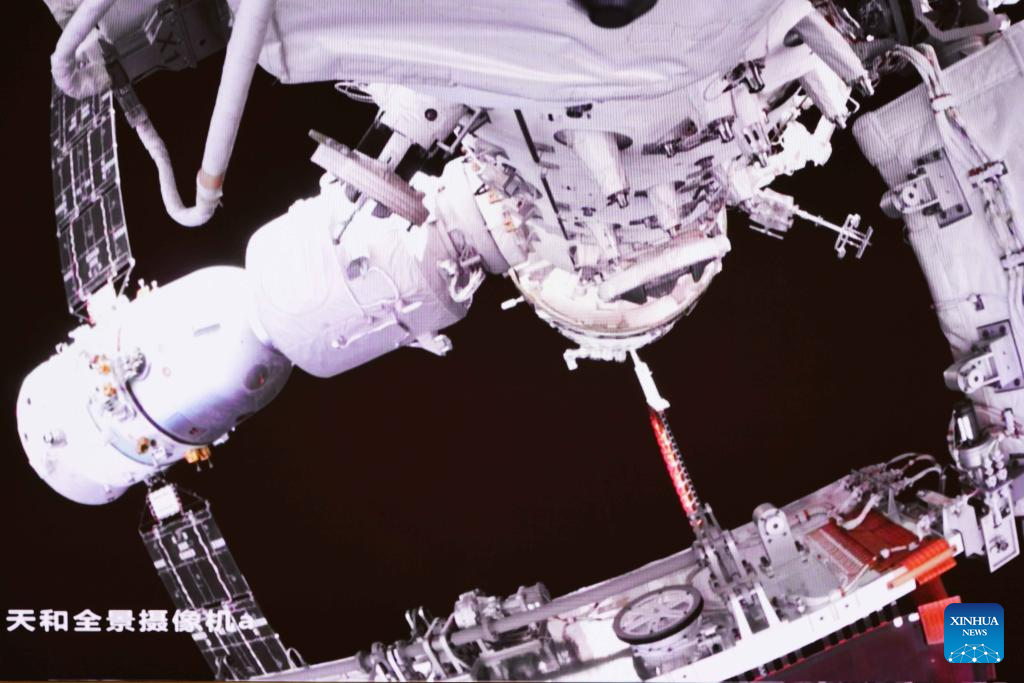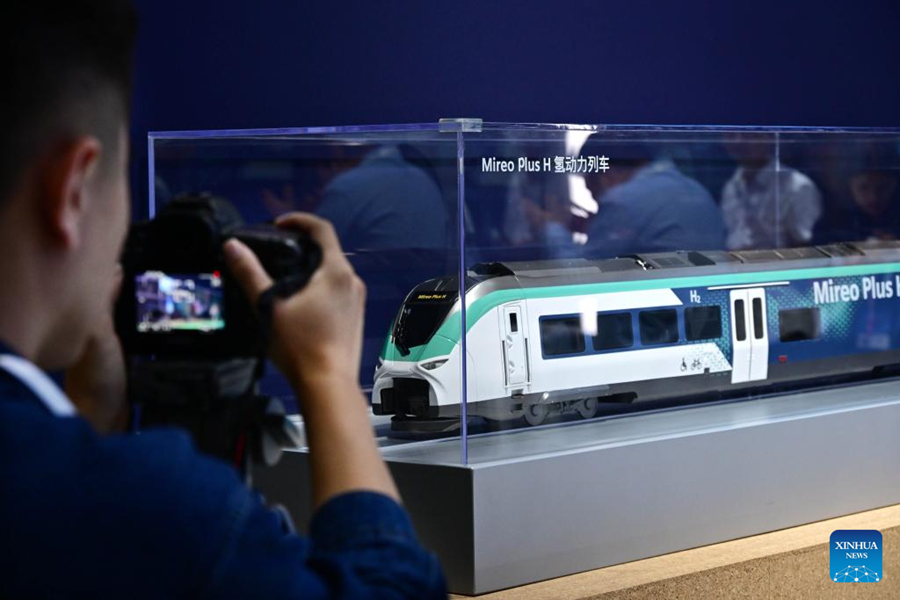
A child learns to make zongzi, or sticky rice dumplings, during an activity celebrating the Dragon Boat Festival at He Garden in Yangzhou City, Jiangsu Province, June 10, 2024. (CFP Photo)
Jiangsu Province reported stable growth of cultural and tourism spending during the Dragon Boat Festival holiday from June 8 to 10.
The province’s A-class tourist attractions, key rural tourism villages, nightlife destinations, and cultural venues received 11.9 million tourist trips over the three-day holiday, up 16% compared to the same holiday last year. This generated a total tourism revenue of 4.8 billion yuan, a 15.1% increase year-on-year.
A majority of tourists opted for short-distance visits, either around the city or in rural areas. Popular destinations in the province include the Confucius Temple-Qinhuai River Scenic Area and Zhongshan Mountain National Park in Nanjing, and the Pingjiang historic district, Jinji Lake scenic spot, and the Taihu Lake tourism area, all located in Suzhou City.
Programs focusing on Huaiyang cuisine, city walks, and museums were particular popular among visitors. In addition, online travel platforms including Ctrip and Tuniu saw a significant increase in bookings for self-guided tours in the province.

This photo, taken on June 8, 2024, shows a dragon boat race at Xuanwu Lake in Nanjing City. (CFP Photo)
Jiangsu’s inbound tourism markets is also recovering, as the province has implemented several supportive measures. On June 9, more than 40 South Korean tourists arrived in Lianyungang aboard a cruise ship, exploring the historical and cultural heritage of the traditional Chinese festival.
The festival highlighted intangible cultural heritage and folk customs. The province’s Department of Culture and Tourism has recommended educational tours at cultural venues and museums, which cover topics such as the culture of Wu and ecological civilization. These efforts are also expected to boost tourism during the upcoming summer school holiday.
Data showed that the province’s cultural venues, museums, and historical sites accounted for more than 40% of the total tourist trips. Notably, educational programs hosted by the Nanjing Museum and Yangzhou China Grand Canal Museum were fully booked during the holiday.
Furthermore, the province’s historical and cultural zones organized diverse activities, including night food stalls and markets showcasing intangible cultural heritage, which became new drivers of consumer spending. The holiday saw a total of more than 2,200 commercial performances across the province, fueling tourism spending of nearly 390 million yuan on transportation, catering, and accommodation.




















